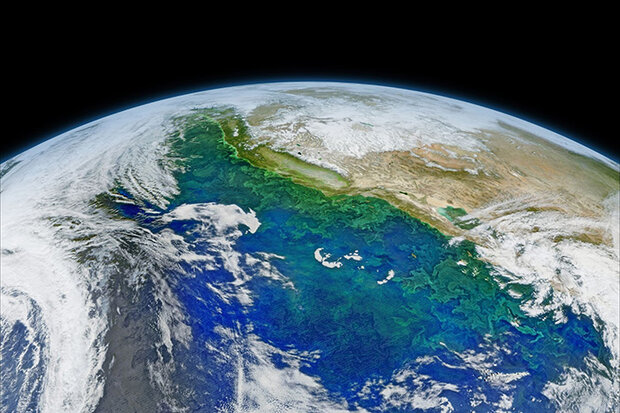How do high-resolution ocean reanalyses compare in the California current system?

The California Current, highlighted in green, meanders along the West Coast. Credit: NASA

The California Current, highlighted in green, meanders along the West Coast. Credit: NASA
Sparse and inconsistent coverage of ocean observations makes analysis of climate impacts on ocean physics and marine ecosystems challenging. As a result, ocean reanalyses (i.e., ocean models created by observations through data assimilation) were developed to provide historical ocean state estimates that are spatially and temporally uniform. Recent advances in high-performance computing and the number and quality of observations have led to the development of high-resolution ocean reanalyses, which offer an opportunity to investigate coastal ocean variability with enhanced detail.
In a new Progress in Oceanography article, MAPP-funded authors Dillon Amaya, Michael Alexander, James Scott, and Michael Jacox evaluate and compare the ability of three high-resolution ocean reanalyses; the Global Ocean Reanalysis and Simulations (GLORYS), the Ocean Reanalysis System version 5 (ORAS5), and the California Current System Reanalysis (CCSRA), to accurately represent ocean temperature and salinity (from the surface to the bottom), sea surface height, and mesoscale activity in the California Current Large Marine Ecosystem (CCLME).
Read more at the link below.